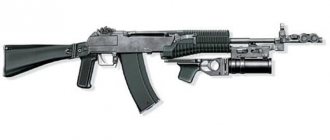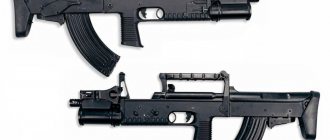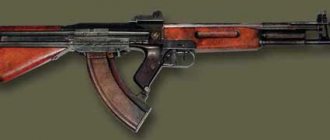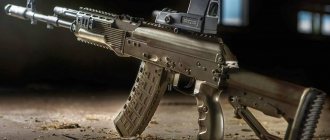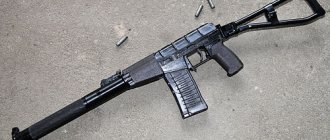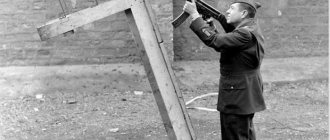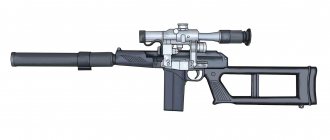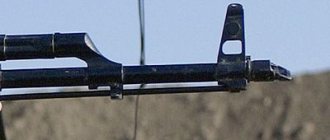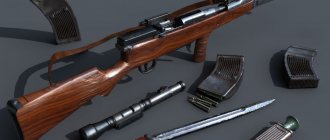| PM md. 63 | |
| PM md. 63 | |
| Type | Machine |
| A country | Socialist Republic of Romania |
| Service history | |
| Years of use | 1963 - present |
| Adopted | 1963 |
| In service | see Operating countries |
| Wars and conflicts | Conflict in Northern Ireland Civil War in Somalia War in Afghanistan (2001-2014) Iraq War Drug War in Mexico Civil War in Libya (2011) Civil War in Syria Civil War in Iraq |
| Production history | |
| Designed by | 1963 |
| Manufacturer | ROMARM |
| Years of production | 1963 - present |
| Options | PM md. 63 PM md. 65 PM md. 90 |
| Characteristics | |
| Weight, kg | 3.7 (md. 63) 3.6 (md. 65) 3.4/3.1 (md. 86 with fixed/folding stock) |
| Length, mm | 870 (md. 63) 873/635 (md. 65) 940/735 (md. 86) with stock extended/folded |
| Barrel length, mm | 415 |
| Cartridge | 7.62 × 39 mm 5.45 × 39 mm (md. 86) |
| Caliber, mm | 7,62 |
| Work principles | removal of powder gases, rotary bolt |
| Rate of fire, rounds/min | 600 700 (md. 86) |
| Initial bullet speed, m/s | 715 880 (md. 86) |
| Sighting range, m | 1000 |
| Type of ammunition | sector magazine for 30 rounds |
| Aim | open |
| PM md. 63 on Wikimedia Commons | |
PM md.
63 (
P
istol
M
itralieră
m
o
d
el 19
63
) - a Romanian licensed copy of the AKM, differing only in the shape of the forend with an integrated additional front handle (there were options with a standard forend).
PM md. 65
- a 1965 version, differing from the md 63 in the metal butt folding down and forward and the shape of the front handle (curved back, not forward).
PA md. 86
(
P
uşcă
A
utomată
m
d
el
19
86
- automatic rifle model 1986) - a variant chambered for 5.45×39 mm, also distinguished by a muzzle brake (borrowed from the AK-74), a folding buttstock to the right from the MPi-AKS-74N (machine guns with a fixed stock were also produced) and a trigger mechanism from the Kbk wz 88 Tantal, allowing for single bursts, burst bursts and continuous bursts. The handguard is similar to the md 63. It is possible to install various optical or night sights, as well as a 40-mm grenade launcher. There was a shortened version with a 302 mm barrel for special units and crews of combat vehicles.
PM md. 90
- a 1990 version chambered for 7.62x39 mm, equipped with a stock similar to the md 86, and a fore-end with a handle, like on the md 63 machine gun. There was a significantly shortened version for special units and crews of combat vehicles.
Self-loading variants of assault rifles were also offered for the civilian market.
Operating countries
- Afghanistan Afghanistan
- Angola Angola
- Bangladesh Bangladesh[1]
- Croatia Croatia
- Democratic Republic of the Congo Democratic Republic of the Congo
- Egypt Egypt
- Estonia Estonia
- Georgia Georgia[2]
- India[3]
- Iran Iran
- Iraq Iraq[4][5]
- Jordan Jordan
- Lebanon Lebanon
- Liberia Liberia
- Libya Libya
- Moldova Moldova
- Morocco Morocco
- Mozambique Mozambique
- Nicaragua Nicaragua
- State of Palestine State of Palestine
- Romania Romania[6][7][8]
- Rwanda Rwanda
- Saudi Arabia Saudi Arabia
- Sierra Leone Sierra Leone
- Somalia Somalia
- Syria Syria
- Tajikistan Tajikistan
- Togo Togo
- Yemen Yemen
5:01 / 09.10.18 Romanian “relatives” of the Kalashnikov assault rifle
In previous articles about variants of the Kalashnikov assault rifle produced in other countries, the conversation was about Czechoslovakian, Yugoslav and Hungarian weapons, but this is not the entire list of countries that produced weapons exactly copying the AK or made assault rifles based on it. In this article we will try to get acquainted with the weapons that Romania produced under a license received from the Soviet Union.
The first AKs produced by Romania, under a license received from the Soviet Union / Photo: Armyman.info
This weapon, as in most variants, is practically a copy of the AK at the initial stage of production, and only in the latest models can one notice the serious work of Romanian designers. But first things first.
It all started in 1963, it was then that Romania received a license from the Soviet Union to produce its AK. This time it all started not with the very first model, but with the AKM, which in the Romanian version became known as the PM md 63. To distinguish this weapon from many other models is quite simple by the handle curved forward for holding, made integral with the wooden forend, everything else the weapon is completely similar to the Soviet version of the machine gun, down to the smallest details. This sample is powered by the same 7.62x39 cartridges from a magazine with a capacity of 30 rounds. The length of the weapon is 870 millimeters, the barrel length is 415 millimeters. The weight of the machine gun without ammunition is 3.7 kilograms, the rate of fire is 600 rounds per minute.
Models showing the work of Romanian design bureaus / Photo: Armyman.info
It is noteworthy that the first machine guns after the start of production were made with a normal wooden forend and, apparently, the idea with an additional handle was not their own, but spied on by the Hungarians, although it’s probably not worth talking about this with a 100% guarantee. On the other hand, the folding butt of Romanian machine guns, which could be observed in the next version of the weapon, is completely similar to the one that was used in the Hungarian model almost 15 years later, so whoever spied what the issue is more than controversial, and Is it worth discussing the less significant points?
In 1965, a version of the weapon with a folding buttstock, the PM md 65, appeared. In addition to the folding buttstock, this machine gun also featured a holding handle under the fore-end. It not only changed its shape, becoming smoother, but also changed its bend, which was apparently caused by the need for the handle to pass through the butt. The length of the weapon with the butt folded and unfolded was 635 and 873 millimeters, respectively, the barrel length did not change and remained equal to 415 millimeters. But the weight of the weapon became a little less and was already equal to 3.6 kilograms; in all other respects, the weapon is completely identical to its predecessor. Many note that this version of the weapon is less accurate, which can be explained by the butt.
Photo: weapon.at.ua
It should be noted that Romanian Kalashnikov assault rifles are quite famous in the world. So one could quite often see reports from warm countries, where these weapons often flashed in the frame. The reason for such prevalence of AKs was that Romania did not keep track of exactly where the purchased samples of assault rifles were going. So, in addition to the fact that these weapons were accepted by the armies of Morocco, Iraq, Palestine, Jordan, Libya, they also quite often fell into the hands of terrorist organizations, and it cannot be ruled out that these weapons were obtained as a result of theft from military warehouses of the above countries. In general, Romania should not be blamed for anything. This weapon is known under slightly different, not the most common names - AIM and AIMS, but don’t call it AK, it will still remain that way. There were no particular complaints about the quality.
Also, in addition to the military version of the weapon, there was a civilian one, both with a fixed stock and with a folding one. These two variants differed from combat models only in the absence of the ability to conduct automatic fire; in all other respects they were completely similar to military weapons. However, many people sawed off the additional handle to hold it on the forend, which made the machine gun more convenient for single fire. Unfortunately, it was not possible to find out exactly how the weapon was deprived of the ability to conduct automatic fire, although these weapons are still in the hands of the civilian population of Romania.
Photo: weapon.at.ua
In the 70s, there was a change from 7.62x39 ammunition to 5.45x39, so the Soviet Union offered to purchase a license for the production of the AK-74 to Romania, as well as to other Warsaw Pact countries. Apparently, Romania considered such an acquisition not the most profitable, as it refused to purchase a license. It was decided to make the transition to a new ammunition on our own, namely by modernizing the PM md 63. It must be said that the modernization did not proceed at the fastest pace, and only in 1983 was a weapon model ready that was not ashamed to be put into service. The very idea of the PM md 86 assault rifle was even better than the original Kalashnikov assault rifle. In general, it was the same AKM of Romanian origin for new ammunition, but some things were borrowed from models of other countries, which also decided to develop weapons on their own, rather than buy a license from the Soviet Union. Thus, the butt of the weapon was taken from the MPi-K-74 assault rifle, common in the GDR, but it could also be fixed. But the most important difference from the Soviet AK was the firing mechanism, which made it possible to fire with a cut-off of 3 rounds. We borrowed this from the Polish Tantal. An additional handle, made integral with the fore-end, could be present, or it could not be, apparently, this depended on the type of troops in which the weapon was used. In addition, the weapon now has a seat for additional sighting devices on the left side of the machine gun. An under-barrel grenade launcher could also be installed on the weapon. In general, there is no advantage of the Romanian machine gun over the Soviet one, but the presence of a 3-round cutoff makes it more advanced, although, in my opinion, this is far from the most important function.
Photo: weapon.at.ua
The length of the weapon with a fixed butt is 940 millimeters. The version with a folding stock has a length of 940 millimeters when unfolded and 735 millimeters when folded. The length of the weapon's barrel is 415 millimeters. The weight of a weapon with a fixed stock is 3.4 kilograms, the version with a folding stock weighs 300 grams less - 3.1 kilograms without cartridges. The rate of automatic fire in the weapon is 700 rounds per minute. This machine gun was also actively exported, already under the name AIM-74 and AIMS-74, and just like the previous models, it fell into a variety of hands. For the civilian market, there were also two versions of the machine gun, with a folded and fixed stock, but, naturally, they did not have the ability to fire automatically, as well as the ability to shoot with a cut-off of 3 rounds.
In addition to the variant with a normal-length barrel, there was also a variant of the weapon intended to arm the crews of armored vehicles and those military personnel for whom the machine gun was more a means of self-defense than the main means of fighting the enemy. The shortened version of the weapon differed from the full version only in the length of the barrel, which was reduced to 302 millimeters, as well as the front sight moved to the tube to remove powder gases from the barrel.
Photo: weapon.at.ua
There was a lot of talk around the transition from 7.62x39 to 5.45x39 ammunition not only in the Soviet Union, but also everywhere where one ammunition replaced another. Having found their bearings very quickly, the Romanians decided to resume production of weapons chambered for 7.62 caliber. This is how the PM md 90 assault rifles appeared, in a version with a folding and fixed stock. In general, the models were new only in name, since they differed from the 63 and 65 models only in their butts, in all other respects they completely copied them. Despite this, the weapon was quite popular and was actively exported, bringing huge profits.
Photo: weapon.at.ua
These are the versions of the Kalashnikov assault rifle that were once made in Romania, however, it is difficult not to notice that even the Romanian adaptation chambered for 5.45 cannot be called Romanian. However, it is quite difficult to collect all the most interesting ideas in one model and at the same time make it work without your own experience in the development of such weapons. The Romanians successfully completed the task and were able to provide weapons not only to their army, but also to export them, as well as saturate the civilian market with self-loading rifles made on the basis of military weapons, both in their country and abroad. I don’t know about anyone, but personally I am somewhat embarrassed by the fact that these weapons brought quite a lot of profit to the country.
Photo: weapon.at.ua
It seems that everything is within the framework of the law and the general rules of the market world, but somehow it’s still not so.
Perhaps the Soviet Union was completely in vain in issuing a license for the production and modernization of the Kalashnikov assault rifle. It seems that a license was given to arm the armies of the allies, and as a result, the allies are raking in money from the sale of weapons. Not good. In any case, the next time you look at a photo of a NATO soldier holding an AK, take a closer look to see if he actually has an AK in his hands. By the way, an interesting fact. Although no one ever spoke sharply negatively about the variants of the Kalashnikov assault rifle in the Warsaw Pact countries, many preferred the Soviet AKs, which were especially valued on the world arms market, although even in comparative tests the assault rifles show the same results in all respects. However, the SOVIET Kalashnikov assault rifle differs from the ROMANIAN Kalashnikov assault rifle, if only in name and country. Source : Military Review publication, Kirill Karasik 1
Tags: Armament, small arms, Kalashnikov assault rifle, production, Romania
Notes
- https://www.bdmilitary.com/index.php?option=com_content&view=article&id=204&Itemid=95
- https://www.ziare.com/stiri/ancheta/csat-a-acoperit-inselatoria-romaniei-in-ce-priveste-comertul-cu-arme-372546
- Sandeep Unnithan.
Why General Kalashnikov couldn't sell the AK in India. intoday.in (December 30, 2013). Retrieved August 15, 2020. - JAMES GLANZ and ALISSA J. RUBIN.
Iraqi Army Takes Last Basra Areas From Sadr Force. The New York Times (April 20, 2008). Retrieved June 22, 2020. - Adnan Abu Zeed.
'Ghost' Soldiers Haunt Iraqi Army. USNews (November 18, 2014). Retrieved June 22, 2020. - willyp.
AIM (AKM) Variants (7.62×39). Image Event (November 26, 2007). Retrieved June 22, 2020. - partisan1943.
Eastern Bloc militaries. Tumblr (March 11, 2015). Retrieved June 22, 2020. - nine o'clock
Navy Day: Romanian Naval Forces celebrate 155th anniversary by impressive air, sea and land exercise. nineoclock.ro (August 15, 2015). Retrieved June 22, 2020.
